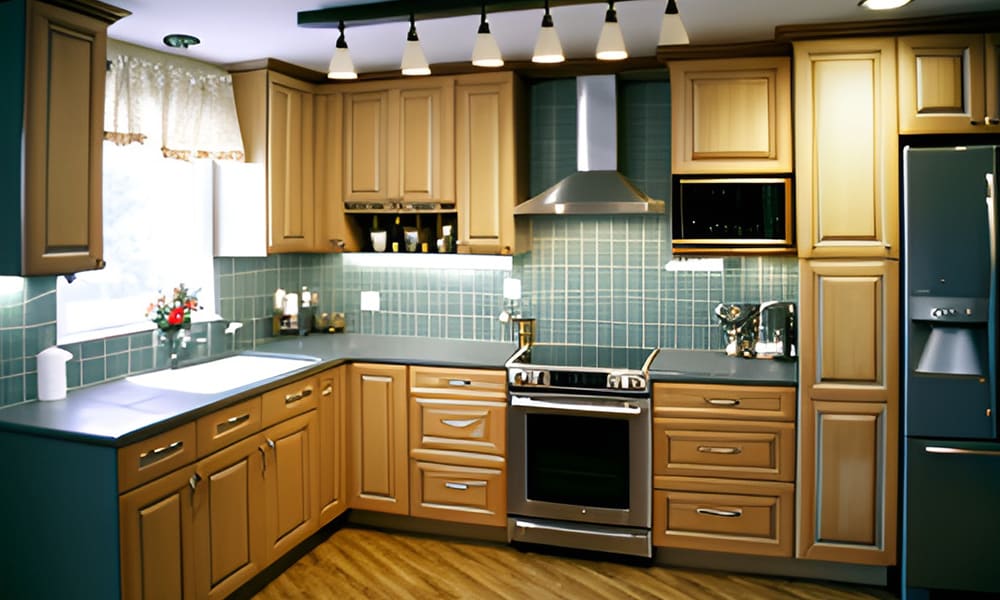Smart Kitchen Design: Modern Interior Solutions for Your Home
A well-planned kitchen can transform daily routines into effortless rituals. Good kitchen design balances workflow, storage, aesthetics and durability while reflecting how you live. Whether you’re renovating a small apartment or reworking an open-plan family home, thoughtful choices about layout, materials, lighting and appliances create a space that looks modern and performs reliably for years. This article breaks down practical strategies and style considerations to help you make informed decisions for a cohesive interior that suits your lifestyle.

How can kitchen layout boost efficiency?
An efficient kitchen layout reduces wasted steps and keeps essential zones—prep, cook, clean—in smart proximity. Common patterns like the galley, L-shape, U-shape and island layouts each suit different footprints and cooking habits. When planning, prioritize clear work triangles between sink, stove and refrigerator, but adapt the triangle to multiple cooks or integrated dining. Consider traffic flow: position walkways to avoid crossing work zones, and place frequently used items in lower cabinets or drawers near prep areas. Small tweaks, like pull-out cutting boards or toe-kick drawers, can raise daily convenience.
What are smart design choices for function?
Functional design blends storage, surface durability and appliance placement. Flat-front cabinetry looks modern and simplifies cleaning, while deep drawers improve access to pots and pans. Choose countertop materials that balance aesthetics and maintenance: quartz offers low upkeep; properly sealed natural stone brings longevity but needs care. Plan for power: an appliance garage or under-cabinet outlets keeps counters clear. Integrate hidden recycling and pull-out pantries to streamline organization. Finally, design for adaptability—select cabinet interiors that can be reconfigured as needs change, which extends the life of your kitchen investment.
How to harmonize interior style and storage?
Interior cohesion is achieved by tying finishes, textures and colors to your home’s broader palette. If your interior favors warm woods, bring that tone into open shelving or a statement island. For tight spaces, open shelving can lighten the room, but balance it with closed storage to hide clutter. Visual continuity—matching hardware finishes, consistent backsplash lines and complementary flooring—helps the kitchen feel like part of the whole home. Thoughtful storage solutions such as vertical dividers, full-extension drawers and corner carousels maintain tidy sightlines while maximizing capacity.
How can the kitchen reflect your home’s character?
A kitchen should feel native to the home’s architecture and the household’s lifestyle. In a traditional home, choose shaker-style doors, classic subway tile and warm metals. In a contemporary loft, favor handleless cabinetry, concrete-look countertops and streamlined appliances. Personal touches—open shelving with curated items, a bespoke tile pattern or an accent color on the island—convey personality without overwhelming the space. If you plan to work with professionals, look for local services that can adapt designs to your home’s structural constraints while preserving character.
What defines a modern kitchen that endures?
A modern kitchen balances aesthetic minimalism with long-term utility. Clean lines, integrated appliances, matte finishes and concealed storage often characterize modern style, but durability is equally important. Invest in high-traffic surfaces and hardware with solid warranties. Lighting layers—task, ambient and accent—are essential: under-cabinet task lights for prep, recessed or pendant ambient lighting, and adjustable accent lights to highlight details. Sustainability features such as energy-efficient appliances and durable, recyclable materials contribute to a modern space that remains relevant and practical over time.
Which materials and lighting suit a practical kitchen?
Material choices influence maintenance and the overall interior mood. Hard-wearing engineered stone, textured porcelain tile and high-grade laminates offer resilience in active homes. For cabinetry, moisture-resistant finishes and quality hinges reduce long-term issues. Lighting should be planned in zones: bright, shadow-free task lighting over work surfaces; softer ambient lighting for dining or entertaining; and focused accent lighting for displays. Consider dimmers and different color temperature options to shift mood. When selecting finishes, prioritize samples in your own home lighting to ensure color and reflectivity perform as expected.
Conclusion
Effective kitchen design integrates practical workflow, considered storage, appropriate materials and lighting choices that reflect your home’s character. By aligning layout decisions with daily routines and selecting finishes that match both style and durability needs, you can create a modern, inviting interior that supports everyday life. Thoughtful planning—whether you tackle the project yourself or consult local services—ensures the kitchen becomes a lasting, functional centerpiece of your home.






